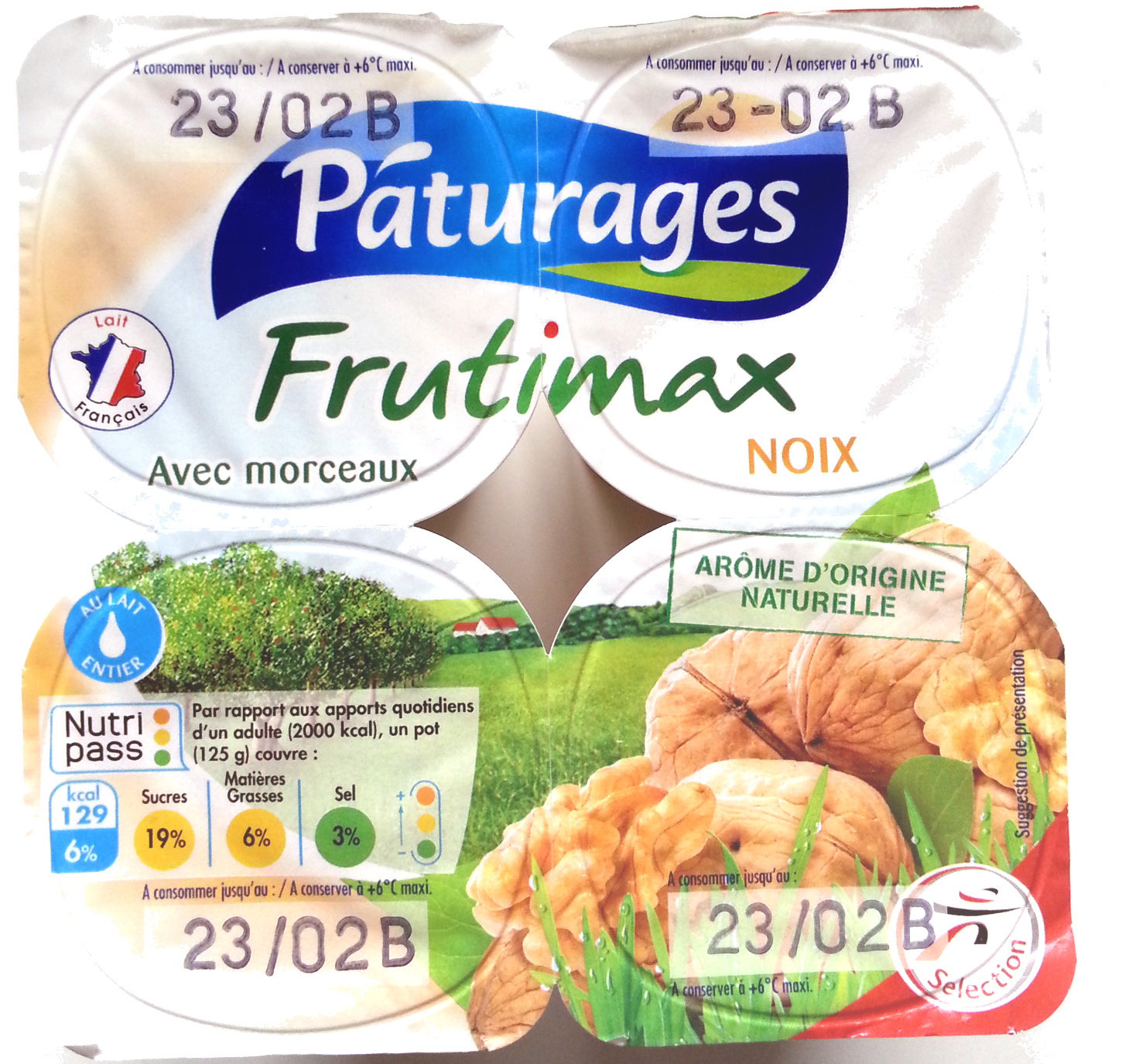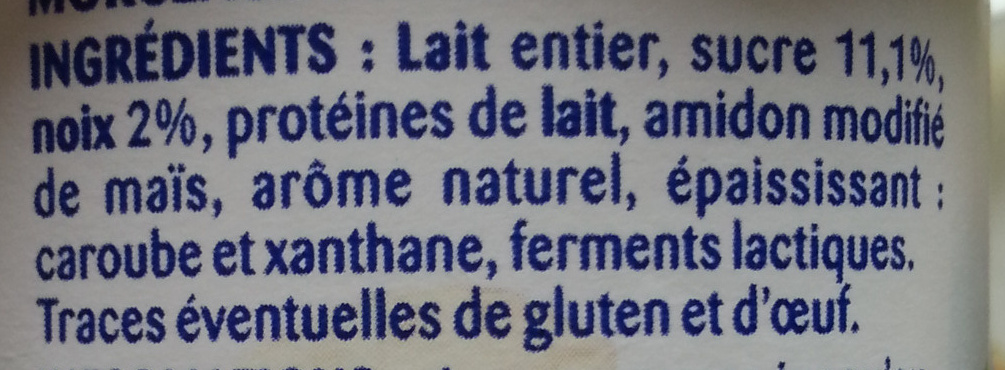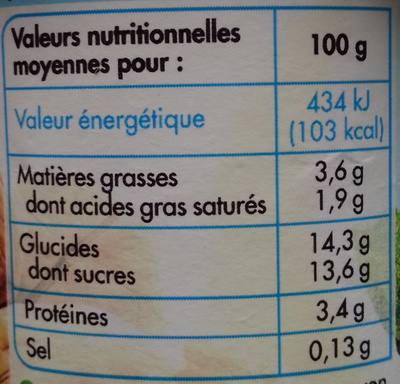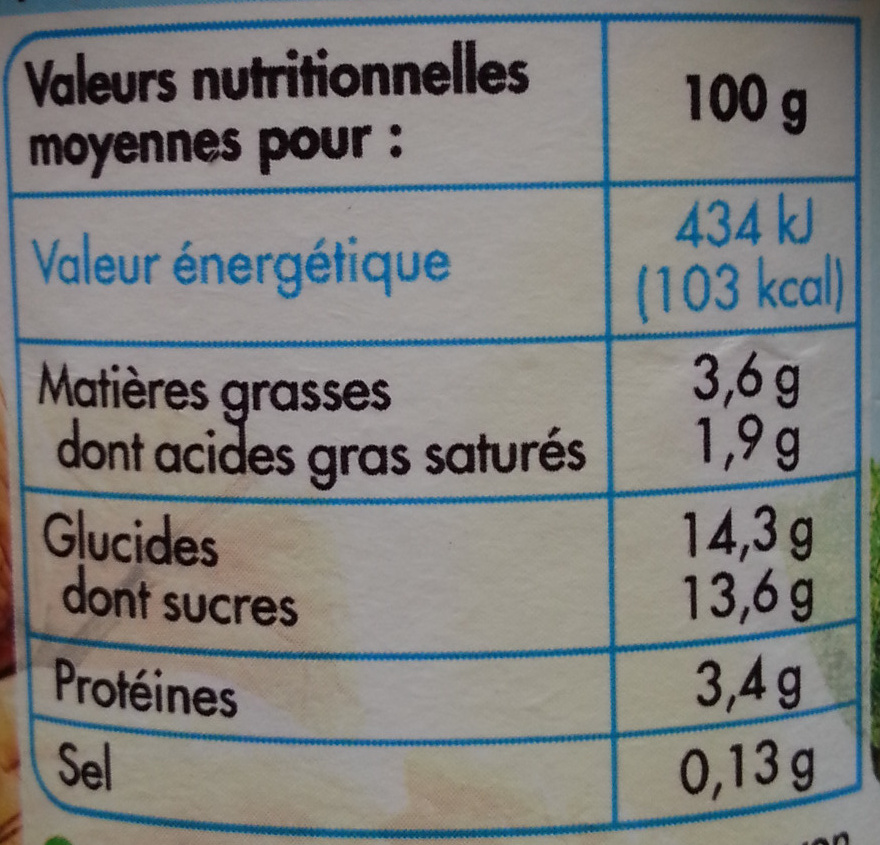Frutimax Noix (Avec morceaux) - Pâturages - 500 g (4 x 125 g)
This product page is not complete. You can help to complete it by editing it and adding more data from the photos we have, or by taking more photos using the app for Android or iPhone/iPad. Thank you!
×
Barcode: 3250391900688 (EAN / EAN-13)
Common name: Yaourt brassé sucré avec des morceaux de noix
Quantity: 500 g (4 x 125 g)
Packaging: Plastic, Pot, Fresh, Seal
Brands: Pâturages
Categories: Dairies, Fermented foods, Fermented milk products, Desserts, Dairy desserts, Fermented dairy desserts, Fresh foods, Fermented dairy desserts with fruits, Yogurts, Fruit yogurts, Stirred yogurts, Sweetened yogurts, Fruit stirred yogurts, Fruit yogurts with fruit chunks
Labels, certifications, awards:
Distributor labels, French milk, Green Dot, Natural flavors, fr:Sélection Intermarché, fr:Au Lait Entier, fr:Avec morceaux, fr:Eco-Emballages, fr:Nutripass
Origin of ingredients: France, fr:Lait
Manufacturing or processing places: Yéo International [Filiale 3A Coop (Sodiaal)] - 183 Avenue des États-Unis - 31200 Toulouse, Haute-Garonne, France
Traceability code: FR 31.555.001 CE - Toulouse (Haute-Garonne, France)
Stores: Intermarché
Countries where sold: France
Matching with your preferences
Environment
Carbon footprint
Packaging
Transportation
Report a problem
Data sources
Product added on by openfoodfacts-contributors
Last edit of product page on by packbot.
Product page also edited by jacob80, jeremy64, laurent1971, pamputt, rouf.











